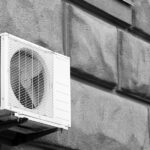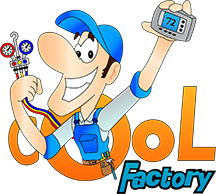
How to Improve Energy Efficiency in Your HVAC System
How to Improve Energy Efficiency in Your HVAC System
Energy efficiency is crucial in today’s world where sustainability and cost-effectiveness are at the forefront of many homeowners’ minds. One significant area where energy efficiency can make a notable impact is in the Heating, Ventilation, and Air Conditioning (HVAC) systems. From reducing utility bills to lessening environmental impact, improving energy efficiency in your HVAC system offers a myriad of benefits. In this article, we’ll delve into practical tips and strategies to enhance the energy efficiency of your HVAC setup, ensuring comfort without excessive energy consumption.
Understanding HVAC Energy Consumption
HVAC systems are pivotal components of residential energy usage, often constituting a substantial proportion. Throughout the year, heating and cooling needs vary with seasonal shifts, but inefficiencies within systems can perpetuate excessive energy consumption regardless of weather conditions. Recognizing how your HVAC system consumes energy is fundamental to pinpointing avenues for enhancement.
Understanding factors like equipment efficiency, insulation standards, and thermostat configurations empowers homeowners to make informed decisions. By grasping these elements and their impact on energy usage, individuals can proactively optimize their system’s efficiency, curbing wastage, and fostering both economic savings and environmental sustainability.
The Importance of Energy Efficiency
Energy efficiency in HVAC systems holds paramount importance for both homeowners and the environment. Efficient HVAC systems consume less energy while providing the same level of comfort, resulting in reduced utility bills and lower carbon footprints. As energy demand continues to rise, optimizing HVAC efficiency becomes imperative for sustainable living.
Moreover, improving energy efficiency aligns with broader environmental goals by conserving natural resources and mitigating greenhouse gas emissions associated with energy production. Embracing energy-efficient practices not only enhances comfort and affordability but also contributes to building a greener and more sustainable future for generations to come.
Common Energy Drains in HVAC Systems
Identifying common culprits in HVAC systems is crucial for optimizing performance and reducing energy waste, as efficiency is essential for indoor comfort and cost-effectiveness. Let’s explore some of the typical energy drains found in HVAC systems:
- Air Leaks in Ductwork: Leaks and gaps in ductwork allow conditioned air to escape into unconditioned spaces, such as attics or crawl spaces. This results in the system working harder to maintain desired temperatures, leading to increased energy consumption.
- Dirty Air Filters: Clogged or dirty air filters restrict airflow, forcing the HVAC system to work harder to circulate air throughout the home. This not only reduces efficiency but can also lead to higher energy bills and diminished indoor air quality.
- Improperly Sized Equipment: HVAC systems that are either too large or too small for the space they serve can result in inefficient operation. Oversized units may short cycle, while undersized units may struggle to adequately heat or cool the space, leading to increased energy consumption.
- Lack of Regular Maintenance: Neglecting routine maintenance tasks, such as cleaning coils, checking refrigerant levels, and lubricating moving parts, can lead to reduced efficiency and premature system failure. Regular maintenance is essential for ensuring optimal performance and energy efficiency of HVAC systems.
Assessing Your HVAC System’s Efficiency
Assessing the efficiency of your HVAC system is the first step towards making meaningful improvements. Start by evaluating its age, as older systems tend to be less efficient than newer models. Next, consider its performance relative to your home’s heating and cooling needs. An oversized system may cycle on and off frequently, wasting energy, while an undersized system may struggle to maintain comfort levels.
Assessing ductwork integrity, insulation quality, and thermostat settings also provides valuable insights into potential areas for improvement. By conducting a comprehensive assessment, homeowners can make informed decisions about upgrades and optimizations to enhance overall efficiency and comfort.
Practical Tips for Improving Efficiency
Improving the efficiency of your HVAC system doesn’t always require a complete overhaul. Simple adjustments and maintenance routines can go a long way in enhancing performance and reducing energy consumption. Start by regularly cleaning or replacing air filters to ensure optimal airflow and minimize strain on the system.
Additionally, sealing air leaks in ductwork and around windows and doors prevents conditioned air from escaping, improving overall efficiency. Programmable thermostats enable precise temperature control and can help reduce energy usage when you’re away from home. Lastly, scheduling annual professional maintenance ensures that your system operates at peak efficiency year-round.
Upgrading Your HVAC Equipment
When it comes to significantly boosting energy efficiency, upgrading your HVAC equipment may be the most effective solution. Newer models are designed with advanced technologies that offer improved performance and energy savings compared to older systems. Consider replacing outdated furnaces, air conditioners, or heat pumps with high-efficiency models that meet ENERGY STAR® standards.
Variable-speed motors, advanced filtration systems, and smart thermostat compatibility are features to look for when selecting new equipment. While upfront costs may be higher, the long-term savings in energy bills and increased comfort make upgrading your HVAC equipment a worthwhile investment in your home’s efficiency and value.
Utilizing Programmable Thermostats
Programmable thermostats offer a convenient way to optimize your HVAC system’s efficiency by automatically adjusting temperatures based on your schedule. By programming different temperature settings for times when you’re asleep or away, you can reduce energy consumption without sacrificing comfort.
Modern programmable thermostats often come with features like Wi-Fi connectivity and smartphone apps, allowing you to control your home’s temperature remotely. Additionally, some models offer advanced algorithms that learn your preferences over time, further enhancing efficiency. By utilizing programmable thermostats effectively, homeowners can enjoy greater comfort and significant energy savings throughout the year.
Proper Maintenance for Efficiency
Regular maintenance is essential for ensuring that your HVAC system operates efficiently and reliably. Start by scheduling annual professional inspections and tune-ups to identify and address any potential issues before they escalate. During these maintenance visits, technicians will clean components, lubricate moving parts, and check for worn or malfunctioning parts that could impact efficiency.
Changing air filters every one to three months is another crucial maintenance task that improves airflow and prevents strain on the system. Additionally, cleaning ductwork and ensuring proper insulation minimizes energy losses and maximizes efficiency. By prioritizing proper maintenance, homeowners can prolong the lifespan of their HVAC system and enjoy consistent comfort with lower energy bills.
Sealing and Insulating Ductwork
Sealing and insulating ductwork is a crucial yet often overlooked strategy for optimizing HVAC efficiency. Over time, ducts can develop leaks and gaps, allowing valuable conditioned air to escape into unconditioned spaces such as attics or crawl spaces. By sealing these leaks with mastic sealant or metal tape, homeowners can prevent energy waste and ensure that air reaches its intended destination efficiently.
Moreover, insulating ductwork in unconditioned areas helps maintain consistent temperatures and minimizes heat transfer. Through these measures, homeowners can achieve significant improvements in system efficiency, enhance indoor air quality, and ultimately lower energy bills.
Optimizing Airflow for Efficiency
Efficient airflow is essential for maximizing HVAC system performance and energy efficiency. Blocked or restricted airflow forces the system to work harder to maintain desired temperatures, leading to increased energy consumption and wear on components. To optimize airflow, start by ensuring that vents and registers are unobstructed and free from dust or debris.
Next, check and replace air filters regularly to prevent clogs that impede airflow. Balancing airflow throughout the home by adjusting dampers and registers can also help distribute conditioned air more evenly. By prioritizing airflow optimization, homeowners can improve comfort levels, extend system lifespan, and reduce energy costs.
Exploring Energy-Efficient Cooling Options
As temperatures rise, exploring energy-efficient cooling options becomes increasingly important for both comfort and cost savings. Traditional air conditioning units can be energy-intensive, but there are now several alternatives designed to minimize environmental impact and reduce energy consumption. For instance, evaporative coolers use significantly less electricity by utilizing water evaporation to cool air, making them a more sustainable choice for certain climates.
Additionally, ductless mini-split systems offer targeted cooling for individual rooms, allowing for precise temperature control and avoiding the energy losses associated with ductwork. By exploring these and other energy-efficient cooling options, homeowners can stay comfortable while minimizing their carbon footprint.
Investing in Smart HVAC Technology
Smart HVAC technology revolutionizes the way homeowners interact with their heating and cooling systems, offering greater convenience, comfort, and energy savings. Smart thermostats, for example, enable remote temperature control and scheduling via smartphone apps, allowing users to adjust settings from anywhere, anytime. These devices also often feature advanced algorithms that learn user preferences and optimize energy usage accordingly, further enhancing efficiency.
Additionally, some smart HVAC systems integrate with home automation platforms, enabling seamless integration with other smart devices like lighting and security systems. By investing in smart HVAC technology, homeowners can enjoy greater control over their indoor environment while reducing energy consumption and utility costs.
Monitoring and Tracking Energy Usage
Monitoring and tracking energy usage is a fundamental aspect of managing HVAC efficiency and identifying opportunities for improvement. By utilizing energy monitoring tools and smart meters, homeowners can gain insight into their HVAC system’s energy consumption patterns in real-time. This information allows for informed decision-making regarding energy-saving strategies, such as adjusting thermostat settings or scheduling maintenance.
Some energy monitoring systems even provide personalized recommendations based on usage data, helping users optimize efficiency further. By actively monitoring and tracking energy usage, homeowners can identify inefficiencies, track progress towards energy-saving goals, and ultimately reduce their environmental footprint and utility expenses.
Enhancing energy efficiency in your HVAC system is not only beneficial for your wallet but also for the environment. By implementing the strategies discussed in this article, you can enjoy greater comfort while reducing energy waste and lowering utility bills. For professional assistance in optimizing your HVAC system for maximum efficiency, contact Cool Factory, Inc.
Our team of experts is dedicated to providing top-notch HVAC services in Sterling, VA, and surrounding areas. Call us today at (703) 713-5113 to schedule a consultation and take the first step towards a more energy-efficient home. Let’s work together to create a greener and more sustainable future.






